Starting a DTF printing company is exciting, but “Is it profitable?” We’ll pull back the layers of this dynamic market in this piece, giving entrepreneurs and business enthusiasts a clear road map to determine the viability of DTF printing. Knowing the likelihood of success in DTF printing is crucial if you’re a seasoned company owner or starting your first project. Let’s examine the enormous commercial prospects that Direct-to-Film printing offers.
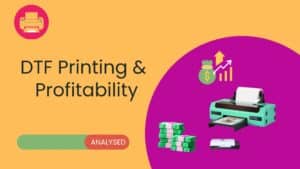
Brief Overview of DTF Printing & Profitability
DTF, or Direct-to-Film printing, is a cutting-edge method for printing elaborate graphics directly into clothing, textiles, and accessories. This digital printing-heat transfer technology has grown in popularity due to its flexibility and capacity to generate colorful, long-lasting prints.
Beyond the specifics, we explore the business side of DTF printing. Although the technology itself is exciting, the main appeal of it is in the possibility for corporate growth it offers. Understanding the intricacies of DTF printing’s profitability could be a game-changer whether you’re an established business owner or an aspiring entrepreneur.
Profitability is the lifeblood of any business. Your venture’s viability and sustainability in DTF printing depends on it. As we explore DTF printing enterprises’ profitability aspects, we’ll provide vital insights for anyone wishing to survive in this changing industry.
The DTF Printing Market
The DTF printing market is always changing because customer needs and trends are always changing. We’ll dive into the market dynamics in this part, giving you a thorough insight of its present situation and potential for the future.
Projections for Market Growth and Current Trends
For making wise business judgments, it is essential to know the market’s pulse. We’ll examine the most recent developments in the DTF printing sector, from eco-friendly printing techniques to personalized garments and goods. We’ll also discuss growth estimates to help you spot market trends and opportunities.
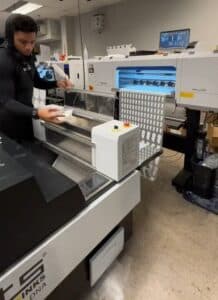
Choosing Target Audiences and Niche Markets
The ability to identify and serve specialized markets and particular target audiences is frequently crucial for success in the DTF printing industry. We’ll talk about how handmade clothing or personalized home goods can be profitable niche markets. You can boost your revenue and market reach by focusing on your desired consumer base.
Key Players and Their Profitability in the Competitive Landscape
Any company initiative must do a thorough analysis of the competitive environment. We’ll examine the strategy and profitability of the major companies in the DTF printing market. Finding your niche and guaranteeing long-term profitability in a cutthroat industry becomes easier through investigating the successes and challenges of existing firms.
Cost Analysis
Understanding all of the expenses associated with DTF (Direct-to-Film) printing is essential for making it profitable. This section will examine the cost structure and financial elements of DTF printing.
Capital Investment: Setup and Equipment Expenses
The key to successful DTF printing is making the appropriate equipment investments. High-quality DTF printers, heat presses, and pre-treatment machines come with a price tag. Businesses must carefully evaluate their capital investment, taking into account the price of the equipment, software, and facility setup. Initial costs may be high, but they are necessary to produce superior print quality and guarantee long-term profitability.
| Image | DTF Printers | Rating | Price |
|---|---|---|---|
|
TOP PICK
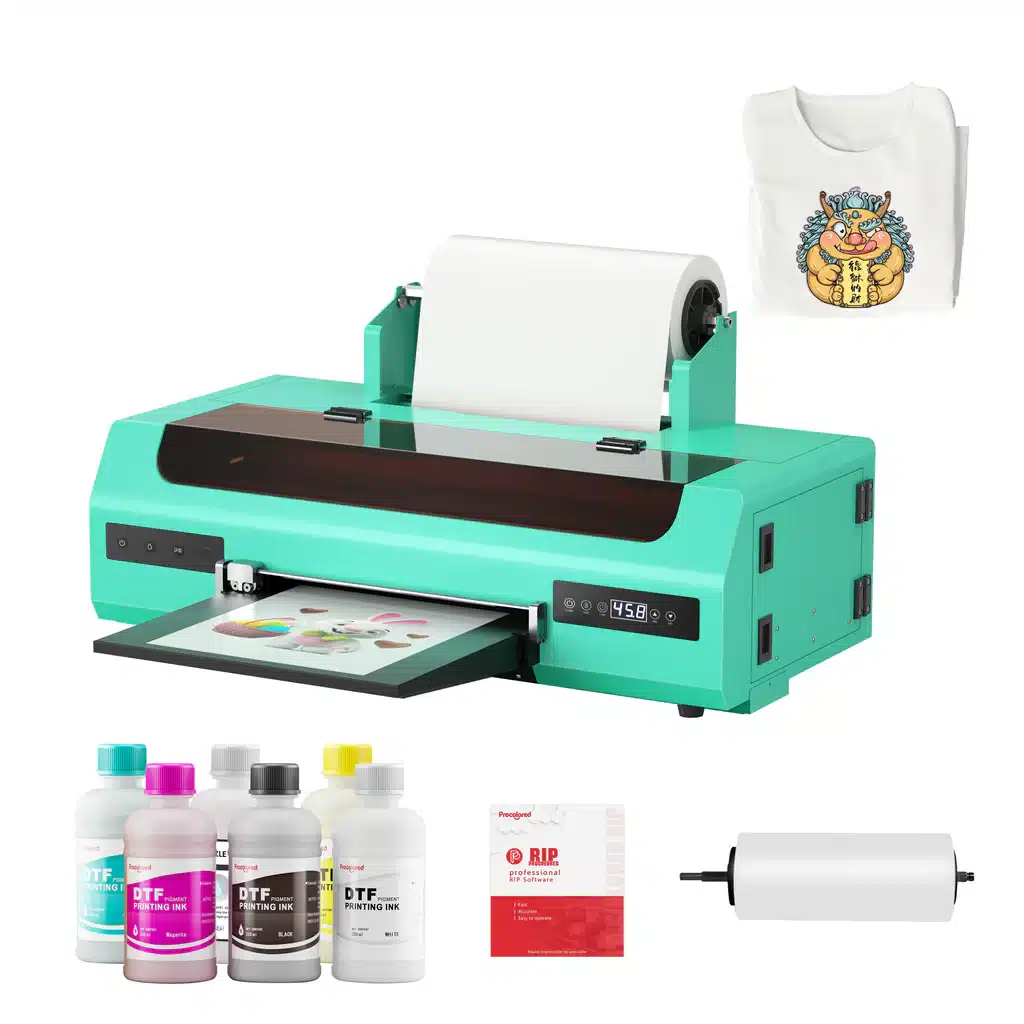
|
Procolored A3+ DTF Printer
|
9.8
|
Check on Procolored
Flat $80 OFF code: DTFSCHOOL80 |
|
EDITOR’S CHOICE
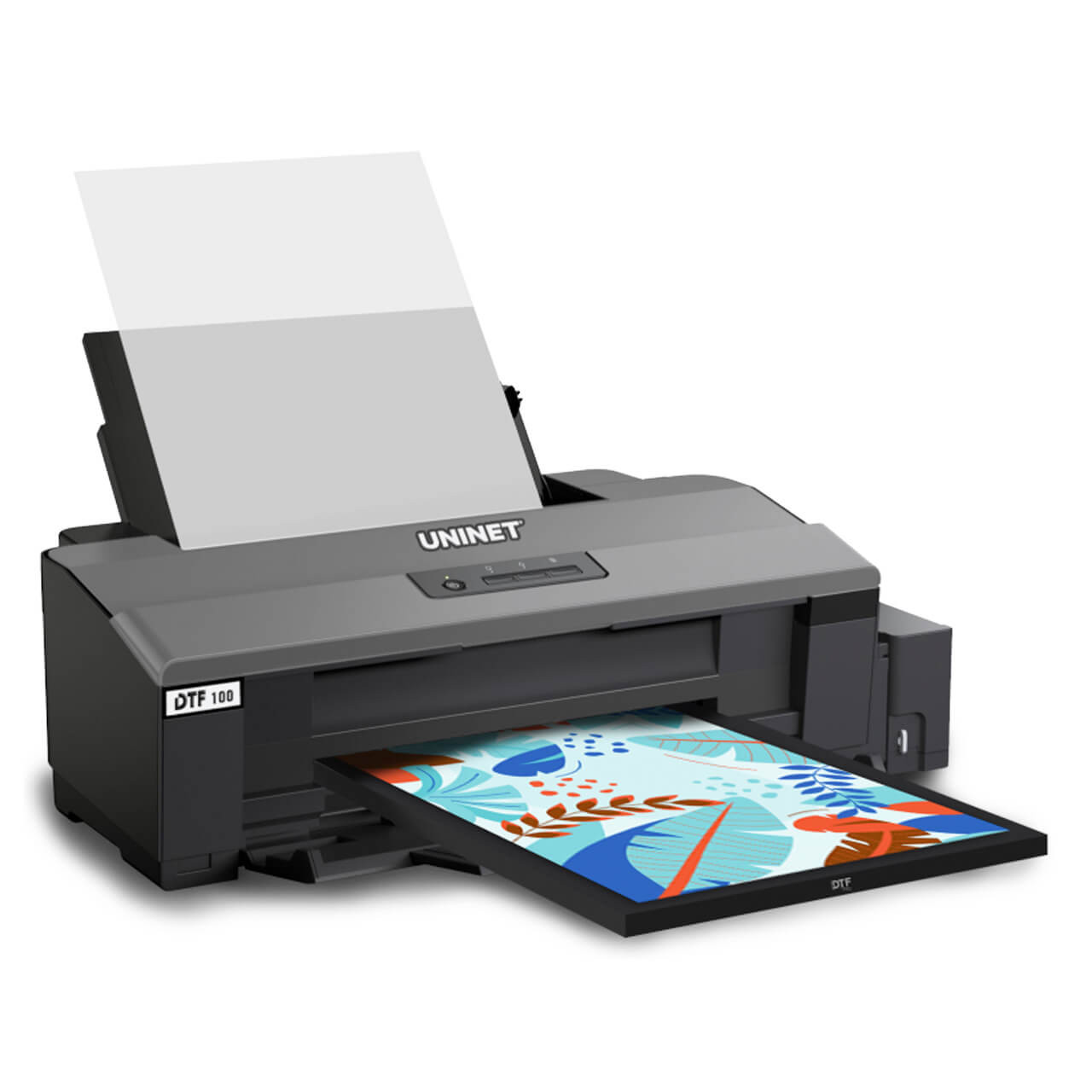
|
Uninet 100 DTF Printer
|
9.4
|
Check on Swing Design |
|
POCKET FRIENDLY

|
Prestige A4 Roller DTF Printer
|
9.1
|
Check on Swing Design |
|
BUDGET PICK

|
Procolored L805 A4 DTF Printer
|
8.6
|
Check on Procolored
Check on Walmart
Flat $80 OFF code: DTFSCHOOL80 |
|
BEST ALTERNATIVE
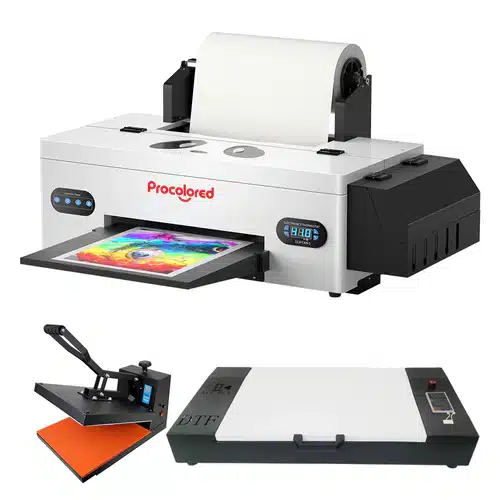
|
Procolored L1800 DTF Transfer Printer
|
8.5
|
Check on Procolored
Check on Walmart
Flat $80 OFF code: DTFSCHOOL80 |
|
TOP CLASS

|
Uninet 1000 DTF Printer
|
8.5
|
Check on Swing Design |
|
VALUE FOR MONEY

|
Punehod A3 DTF Printer L1800
|
8.2
|
Check on Amazon |
|
CHEAPEST

|
Punehod A4 DTF Printer L805
|
8
|
Check on Amazon |
Material Costs: Inks, Films, and Other Consumables
The materials are what keep DTF printing alive. The cost of inks, films, and other consumables directly impacts your bottom line. We’ll discuss consumables price, the significance of procuring high-quality materials, and methods for controlling and maximizing your material expenditures.
Labor Costs: Skilled Workforce and Operational Expenses
Hiring qualified employees, such as designers, machine operators, and quality control specialists, is a necessary part of running a DTF printing company. Labor costs encompass salaries, benefits, and training expenses. Consider utilities, insurance, and maintenance as operating overhead. Maintaining profitability requires striking a balance between efficient operating costs and a trained labor force.

Operational Overhead: Rent, Utilities, and Maintenance
Operational overhead includes all of the costs associated with operating your DTF printing company on a daily basis. This category includes energy costs, insurance premiums, regular maintenance, and rent or mortgage payments for your building. Maintaining profitability requires managing and minimizing these expenses while maintaining high standards.
By knowing and controlling these cost factors, you can make smarter financial choices and start a lucrative DTF printing business.
Pricing Strategies
Your DTF (Direct-to-Film) printing company’s success depends heavily on choosing the appropriate pricing strategy. This section will explain pricing strategies and how to balance competitiveness and profitability.
Setting Competitive Yet Profitable Pricing
Pricing requires a fine skill to find the sweet spot. To stay competitive, assess your specialty and region’s pricing environment, including costs, market demand, and rivals’ price. But never can competition come at the expense of profitability. We’ll look at techniques for figuring out your break-even point and pricing products so there are healthy profit margins.
Pricing Models: Per-Print vs. Subscription Services
It might be wise to diversify your pricing strategies. Customers have more freedom with per-print pricing, but subscription services can result in a consistent, recurring income. We’ll evaluate the benefits and drawbacks of each model to assist you in selecting the one that best serves your company objectives. A balanced mix of both types could increase profits and expand consumer base.
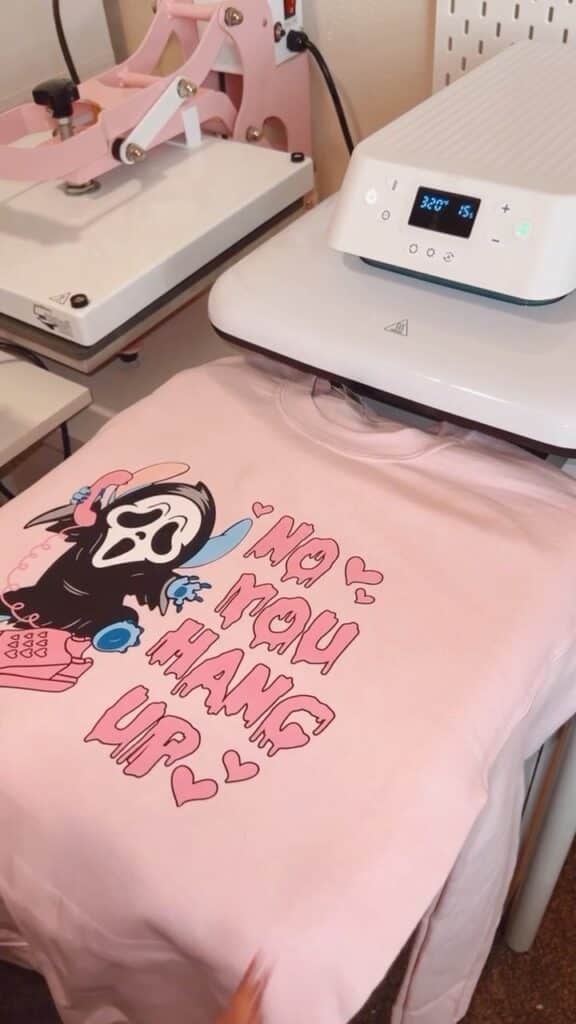
Factors Influencing Pricing Decisions
Pricing decisions aren’t made in isolation. There are several variables at play, including seasonal fluctuations, economic situations, customer perception, market demand, and market conditions. These variables affect price, therefore we’ll explain how to adjust. Understanding these dynamics will help you make agile price choices that optimize profits and adapt to market changes.
By understanding these pricing techniques, you can set up your DTF printing company for success and make sure that your prices represent the value you provide while maintaining a healthy bottom line.
Profit Margin Maximization
Profit margin optimization is essential for success in the cutthroat world of DTF (Direct-to-Film) printing. This section covers techniques and procedures to maximize profit margins and ensure your business’s financial health.
Streamlining Production Processes for Efficiency
In DTF printing, profitability is based on efficiency. Production process optimization include removing bottlenecks, cutting down on idle time, and improving workflow. You can increase production without proportionately increasing expenditures by streamlining your processes. This not only increases profitability but also makes it possible for you to better satisfy client needs, boosting your marketability.
Minimizing Material and Waste Losses
DTF printing involves considerable material expenses. Reducing waste and material losses can have a direct impact on your bottom line. Efficient material usage not only saves costs but also aligns with sustainable business practices, which can be a selling point in today’s market.
Integration of automation and technology
The DTF printing business has changed dramatically because to automation. Automation like color matching and order processing could increase productivity and reduce mistakes.
Increasing Production Volume for Greater Throughput
Scaling up production is essential as your DTF printing company expands. This entails increasing your ability to manage higher order quantities without sacrificing quality. We’ll look at scaling techniques including acquiring additional tools, planning shifts more effectively, and hiring qualified staff. Effective scaling boosts profitability while also positioning your company for long-term success in a cutthroat industry.
By putting these tactics for profit margin maximization into practice, you can make sure that your DTF printing company runs smoothly and is financially stable even as it expands and changes.
Marketing and Customer Acquisition
In the Direct-to-Film (DTF) printing business, getting new customers and doing good marketing can be the key to making money. This section explores crucial tactics for effectively communicating with your target audience and building everlasting client connections.
DTF Printing Services’ Effective Marketing Strategies
Marketing is the cornerstone of attracting new customers to your DTF printing business. Explore numerous marketing platforms and strategies, such as search engine optimization (SEO), social media marketing, digital advertising, and content marketing.
Create specific marketing plans that emphasize the special advantages of DTF printing while demonstrating your skills, product quality, and customisation possibilities. In addition to generating early sales, effective marketing builds your brand’s recognition in the marketplace.
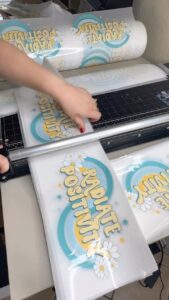
Choosing the Best Customers to Target: B2B vs. B2C
Finding your target customer is essential for productivity and success. Choose between business-to-business (B2B) and business-to-consumer (B2C) industries to concentrate on. B2C clients might be people looking for personalized items, while B2B clients could be garment firms, sports teams, or promotional product companies. Understanding these groups’ desires and expectations can help you personalize your services and marketing.
Building Long-Term Client Relationships to Ensure Return Customers
In many cases, getting recurring business is more lucrative than finding new clients. For recurring income, this section highlights the value of maintaining customer connections.
Use customer relationship management (CRM) tools to maintain contact, create loyalty schemes, and deliver first-rate customer service. Overdelivering and producing high-quality outcomes transform one-time customers into loyal customers who return for future printing requirements, boosting profits.
By using these marketing and customer acquisition techniques, you can attract a regular stream of customers and establish a loyal base that generates revenue and ensures your DTF printing business’s success.
Case Studies
In this part, we’ll look at a case study of a Direct-to-Film (DTF) printing company to learn more about its profitability, challenges to overcome, and market-competitive adaption tactics.
Example: PrintWear Pro
Background: When PrintWear Pro was established in 2016, it had the goal of offering small companies and individuals unique garment options. They started off with a little investment and a small number of customers, but because to their dedication to high-quality and creative marketing techniques, they rapidly gained momentum.
PrintWear Pro credited its success to a number of important elements, including:
- Focus: They focused on a specific market – custom-printed sportswear for regional teams – and established a solid name in it, which enabled them to provide reasonable prices.
- Sustainability: Customers’ growing environmental awareness drove PrintWear Pro to embrace eco-friendly processes, which saved money and increased market attractiveness.
- Diversification: They expanded their range of goods beyond athletics, entered the market for customized presents, and worked with nearby companies to produce promotional goods.
- Marketing Innovation: To reach a larger audience, PrintWear Pro used social media influencers and executed customized ad campaigns.
- Partnerships: Establishing strategic alliances with neighborhood schools and sports groups ensured a consistent stream of large orders.
The experience of PrintWear Pro shows how a DTF printing company can grow profitable by locating market niches, streamlining processes, and adjusting to changing market dynamics. For business owners hoping to stand out in this cutthroat field, their story acts as motivation. Let’s see some of their advanced business growth strategies:
- Efficiency and Automation: Their manufacturing was expedited by investing in automated hardware and software, which cut labor expenses and material waste.
- Approach focused on the client: Recurring business and recommendations were drawn by excellent customer service and short reaction times.
Startups in the DTF printing sector confront similar difficulties to those encountered by PrintWear Pro:
- Market Saturation: As the number of rivals increased, preserving profit margins became difficult. They discovered how to modify their price policies without sacrificing quality.
- Quality Assurance: A few early errors cost them money and damaged their reputation. They learned the value of rigorous quality control procedures from this.
Conclusion
In conclusion, DTF printing offers significant possibilities for business owners looking to benefit from the custom printing industry. Success is possible through recognizing market trends, minimizing expenses, implementing sustainable practices, and cultivating customer connections. Its versatility lets firms serve varied niches and meet changing customer expectations.
The appropriate methods and a dedication to excellence can help you overcome obstacles like quality control and market competitiveness. As you begin your DTF printing adventure, keep in mind that innovation, customer attention, and sustainability lead the road for a successful and fulfilling endeavor in this fascinating sector.
FAQs
No, while DTF printing is commonly used for custom apparel, it’s a versatile technique that can be applied to various substrates, including textiles, accessories, and promotional products. Its adaptability makes it a valuable option for a range of businesses.
Implementing eco-friendly techniques in DTF printing can prove difficult since it requires finding sustainable materials, spending money on eco-friendly equipment, and making sure environmental laws are followed. However, with proper planning and a dedication to sustainability, these issues can be resolved.
Definitely. In reality, concentrating on a certain niche market has many advantages. You may often charge premium rates, cultivate a devoted following of customers, and increase profitability by attending to individual consumer requirements and providing distinctive customisation possibilities.
In a competitive market, differentiation can be accomplished through superior print quality, exceptional customer service, innovative design options, and sustainable practices. Your company could stand out by developing a distinctive selling proposition that appeals to your target market.
Yes, there are trade organizations and internet forums where DTF printing experts can connect and exchange expertise. Trade magazines and online discussion boards can additionally offer helpful contacts and information for people working in the DTF printing industry.
DTF printing is a sustainable business model if you adapt to changing market demands, invest in technological advancements, and incorporate eco-friendly practices. A commitment to quality and customer satisfaction is key to long-term success in this industry.

Ashley Wang is a skilled sales manager with knowledge in DTF printing. She presently works for ShenLan Digital, a reputable DTF printer maker. Ashley is the best person to offer advice on selecting the most suitable DTF printer because she has tested a lot of them. She launched DTFPrinterSchool to educate individuals and organizations about DTF printing technology, providing her expertise and observations on the most recent advancements in the sector. Ashley is an invaluable resource for businesses and individuals wishing to invest in DTF printing technology because of her expertise and experience in the industry.
